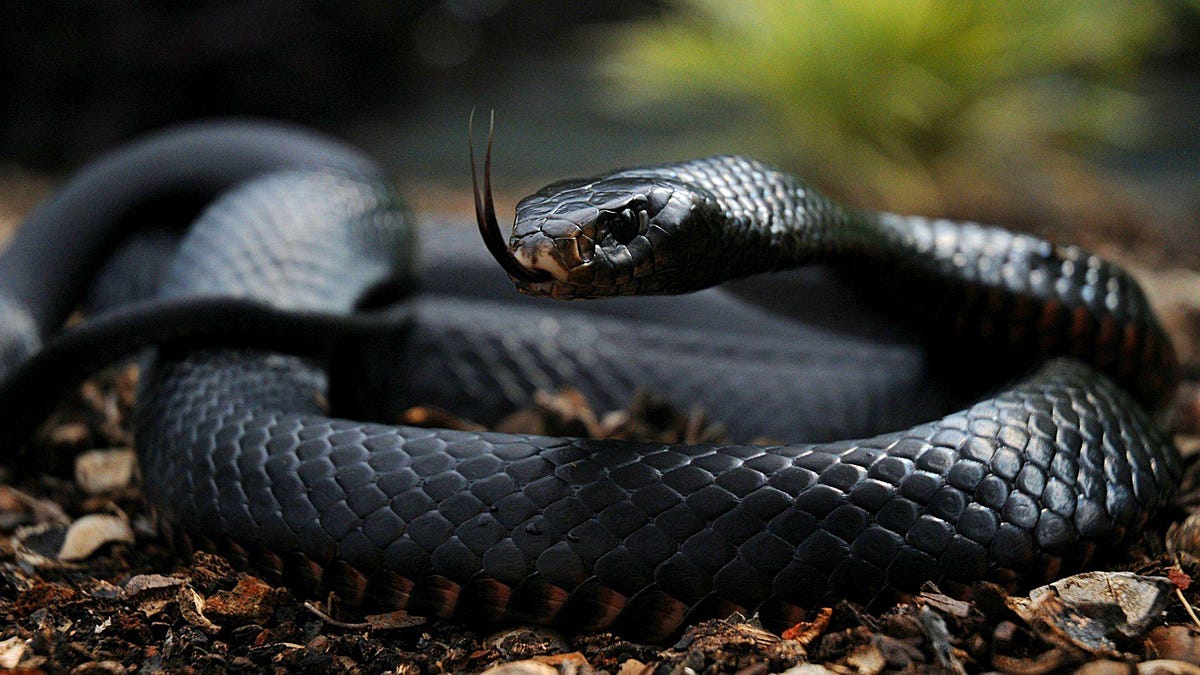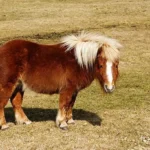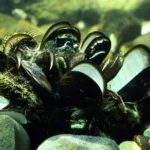
The Black Mamba’s scientific name is Dendroaspis polylepis, and it belongs to the family Elapidae. Taxonomically, this classification places the Black Mamba within the same family as other venomous snakes like cobras and coral snakes. This information is essential for scientists and herpetologists as it helps them understand the snake’s evolutionary lineage and genetic relationships with other species. It provides valuable insights into the snake’s place in the natural world.
The Black Mamba’s venom is considered one of the deadliest among all snake species globally. Its venom contains a potent cocktail of neurotoxins, which specifically target the nervous system. When injected into a victim, these neurotoxins can lead to paralysis, respiratory failure, and, if left untreated, death. The extreme lethality of Black Mamba venom underscores the snake’s fearsome reputation and the importance of seeking immediate medical attention in case of a bite.
Black Mambas are native to sub-Saharan Africa, with their geographic range spanning several countries, including South Africa, Zimbabwe, Mozambique, and others. Their distribution is influenced by a variety of environmental factors, including climate, vegetation, and habitat suitability. Understanding their range is vital for conservation efforts and for raising awareness among communities living in or near their habitats.
While the Black Mamba is not entirely black, it typically displays a coloration that ranges from olive-green to gray or brown. The common name “Black Mamba” is derived from the dark, inky-black coloration inside their mouths, which they expose when feeling threatened or agitated. This defensive display serves as a warning signal to potential predators or intruders.
Black Mambas are among the longest venomous snakes in the world. Adult individuals often reach impressive lengths of 6 to 8 feet (1.8 to 2.4 meters), although some may exceed these measurements. Their substantial size contributes to their reputation as formidable predators and underscores the need for caution when encountering them in the wild.
The Black Mamba is renowned for its incredible speed and agility. When provoked or threatened, it can achieve speeds of up to 12 miles per hour (19 kilometers per hour). This exceptional swiftness is a crucial asset for both hunting and escaping potential dangers, and it distinguishes the Black Mamba as one of the fastest-moving snakes in the animal kingdom.
Black Mambas are carnivorous snakes with a diet primarily composed of small mammals, birds, and occasionally other reptiles. Their remarkable speed and agility are key assets in hunting, allowing them to chase down and capture prey effectively. Their diet and hunting behavior are essential components of their ecological role within their ecosystems.
The venom of the Black Mamba consists primarily of neurotoxins, which target the nervous system of its prey. This venom acts swiftly, causing paralysis and, if not treated promptly, respiratory failure. The combination of potent venom and the snake’s ability to deliver multiple bites in quick succession underscores the lethality of a Black Mamba’s strike.
In a single bite, a Black Mamba can inject approximately 100-120 milligrams of venom into its victim. However, they are capable of delivering more venom in a sustained bite. The quantity of venom injected plays a critical role in determining the severity of envenomation and reinforces the urgent need for immediate medical intervention in the event of a bite.
Black Mambas possess long, slender fangs that can extend up to 6.5 millimeters in length. These fangs enable them to deliver venom deeply into their prey or potential threats. Understanding the structure of their fangs is crucial for individuals who study or work with these snakes, as it aids in safe handling practices and reinforces the importance of respecting their potential danger.
While primarily diurnal (active during the day), Black Mambas are known to hunt at night as well. This occasional nocturnal behavior can be influenced by factors such as temperature and prey availability. Black Mambas may venture out during the night to hunt or take advantage of favorable conditions.
Black Mambas are adaptable and can inhabit a range of environments. They are commonly found in savannas, grasslands, forests, and rocky hillsides. This wide habitat preference allows them to thrive in diverse ecosystems, from open grassy plains to densely wooded areas.
Black Mambas are typically characterized as shy and reclusive snakes. They prefer to avoid confrontation and are known for their tendency to flee when confronted by potential threats. However, when cornered or threatened, they can become highly defensive and even aggressive, displaying territorial behavior.
In the wild, Black Mambas have an average lifespan of approximately 11 years. However, in captivity, they can live longer, sometimes reaching up to 20 years or more. Captive conditions, such as a controlled environment and access to consistent food and medical care, can contribute to their extended lifespan.
Female Black Mambas reproduce by laying eggs. A single female can produce clutches of up to 17 eggs, which she carefully selects and deposits in concealed locations to protect them from potential predators. After laying the eggs, the female provides no parental care, and the hatchlings are left to fend for themselves.
The mortality rate for Black Mamba bites is high if not treated promptly with antivenom. The venom’s neurotoxic effects can rapidly lead to paralysis and respiratory failure in the absence of medical intervention. Timely access to appropriate medical care, along with the administration of antivenom, is essential for increasing the chances of survival.
Despite being apex predators in their ecosystems, Black Mambas are not without natural enemies. Birds of prey, including eagles and hawks, are known to hunt and prey upon Black Mambas. Additionally, some larger mammals, such as mongooses and honey badgers, possess the agility and defenses needed to tackle and consume these venomous snakes.
The Black Mamba is currently listed as a species of least concern by the International Union for Conservation of Nature (IUCN). This designation is due to its wide distribution across sub-Saharan Africa and its adaptability to various habitats. While not currently considered threatened, ongoing conservation efforts are essential to monitor and protect its populations.
The Black Mamba’s distinctive appearance has led to mimicry by some non-venomous snake species, such as the Eastern Coral Snake. These harmless snakes imitate the coloration and patterns of the Black Mamba as a defense mechanism, deterring potential predators by capitalizing on the venomous snake’s intimidating reputation.
The Black Mamba is renowned for its ability to strike at a distance of up to 4.5 meters (14.8 feet). This remarkable striking range, combined with its speed, agility, and highly potent venom, makes it a formidable predator and a potential threat to those who encounter it in the wild.
The Black Mamba holds a fearsome reputation in African folklore and is often featured in myths and stories. Its formidable appearance and lethal venom have contributed to its portrayal as a symbol of danger and fear in various cultural narratives across its native range.
Black Mambas use their exceptional speed and agility to chase down prey. When hunting, they often deliver a rapid series of bites to immobilize their prey quickly. This hunting technique allows them to capture and consume small mammals, birds, and other suitable prey efficiently.
Contrary to their reputation, Black Mamba attacks on humans are relatively rare. These snakes typically prefer to evade potential threats by retreating or fleeing rather than engaging in confrontations. However, when cornered or provoked, they can exhibit defensive behavior, including aggressive strikes, highlighting the importance of caution and respectful distance when encountering them.
The Black Mamba was first scientifically described by André Marie Constant Duméril in 1858. Duméril, a French zoologist and herpetologist, provided one of the earliest formal scientific descriptions of the species, contributing to our understanding of its biology and taxonomy.
Due to their highly venomous nature, captive Black Mambas require skilled and experienced handlers. Handling them without proper training and safety protocols can be extremely dangerous and life-threatening. Individuals working with Black Mambas in captivity must exercise extreme caution, use specialized equipment, and follow strict safety guidelines to minimize the risk of envenomation.
Frequently Asked Questions about Black Mamba:
Can a person survive a black mamba bite?
- Yes, survival is possible, but it is highly dependent on swift medical intervention.
- Without antivenom, a black mamba bite is often fatal.
- The black mamba’s venom is a potent neurotoxin and cardiotoxin, meaning it affects the nervous system and the heart.
- Prompt administration of antivenom is crucial for survival.
- Even with antivenom, the severity of the bite (amount of venom injected, location of the bite) plays a significant role in recovery.
- Modern medical care greatly increases the chance of survival.
Do black mambas live in the US?
- No, black mambas are native to sub-Saharan Africa. They are not found in the United States.
What animal kills a black mamba?
- Black mambas, while extremely dangerous, are vulnerable to certain predators:
- Birds of prey: Eagles, particularly snake eagles, are known to hunt and kill snakes, including black mambas.
- Mongooses: These small mammals have a degree of resistance to snake venom and are agile enough to attack and kill black mambas.
- Larger snakes: African rock pythons can also prey upon black mambas.
Is a black mamba deadlier than a cobra?
- Both black mambas and cobras are highly venomous, but they differ in several ways:
- Venom toxicity: Black mamba venom is known for its rapid-acting neurotoxins.
- Delivery: Black mambas are known for their speed and ability to deliver multiple strikes, injecting large amounts of venom.
- Temperament: Black mambas, when cornered, can be very aggressive.
- While cobras also have very potent venom, the black mamba’s speed, aggression, and the sheer volume of venom it can deliver make it extremely dangerous.
- Therefore, while both are extremely dangerous, many consider the black mamba to be the more deadly of the two.
- Why is it called a “black mamba” if it’s not black?
- The name refers to the striking black color inside the snake’s mouth, which it displays when threatened.
- The snake’s body color typically ranges from olive to grayish-brown.
- Where do black mambas live?
- Black mambas are native to sub-Saharan Africa.
- They inhabit a variety of environments, including savannas, woodlands, rocky slopes, and sometimes even forests.
- How dangerous is a black mamba bite?
- Extremely dangerous. Black mamba venom is a potent neurotoxin and cardiotoxin.
- Without prompt antivenom treatment, a bite can be fatal.
- They are also known for their speed and ability to deliver multiple strikes.
- How fast can black mambas move?
- Black mambas are among the fastest snakes in the world.
- They can reach speeds of up to 12 miles per hour (around 19 kilometers per hour) over short distances.
- What does black mamba venom do?
- The venom primarily attacks the nervous system and the heart.
- Symptoms can include:
- Rapid onset of pain at the bite site.
- Neurological effects like muscle weakness, paralysis, and respiratory failure.
- Cardiovascular effects that can lead to heart failure.
- What do black mambas eat?
- Black mambas are carnivores.
- Their diet consists of small mammals (rodents, hyraxes, bats), birds, and other reptiles.
- Are black mambas aggressive?
- While they have a reputation for aggression, black mambas generally prefer to avoid confrontation.
- They will typically only attack if they feel threatened or cornered.
- When threatened, they will give a very dramatic threat display, opening the black interior of their mouth, and raising the upper portion of their body.
- How long do black mambas grow?
- Adult black mambas typically range from 6.6 to 8.2 feet (2 to 2.5 meters) in length.
- However, they can reach lengths of up to 14 feet (4.3 meters).
- What are the natural predators of the black mamba?
- Predators include:
- Birds of prey (especially snake eagles).
- Mongooses (which have some resistance to their venom).
- Larger snakes, such as the African rock python.
- Predators include:
- What is the lifespan of a black mamba?
- In the wild, black mambas are thought to live for around 11 years.
- In captivity, they have been known to live for over 20 years.
Important Considerations:
- It is crucial to emphasize that black mambas should be left alone. If you encounter one, maintain a safe distance and allow it to move away.
- If you are in an area where black mambas are present, it is wise to learn proper snake safety.








